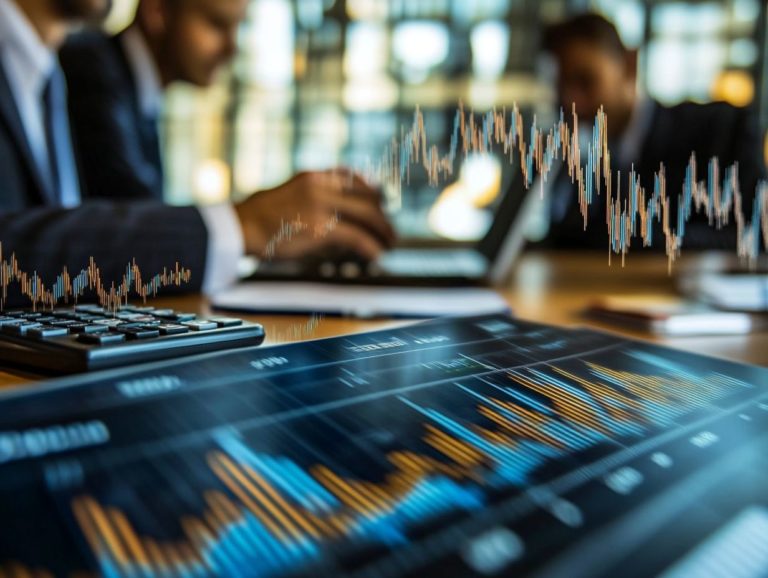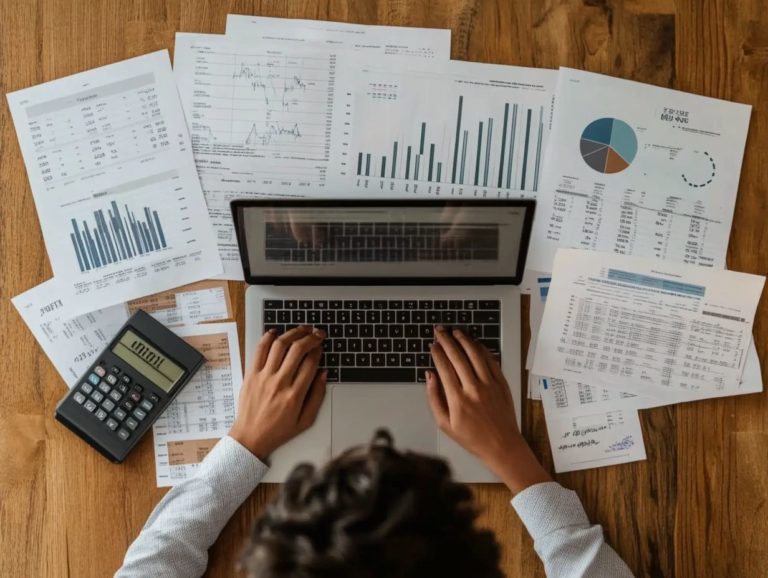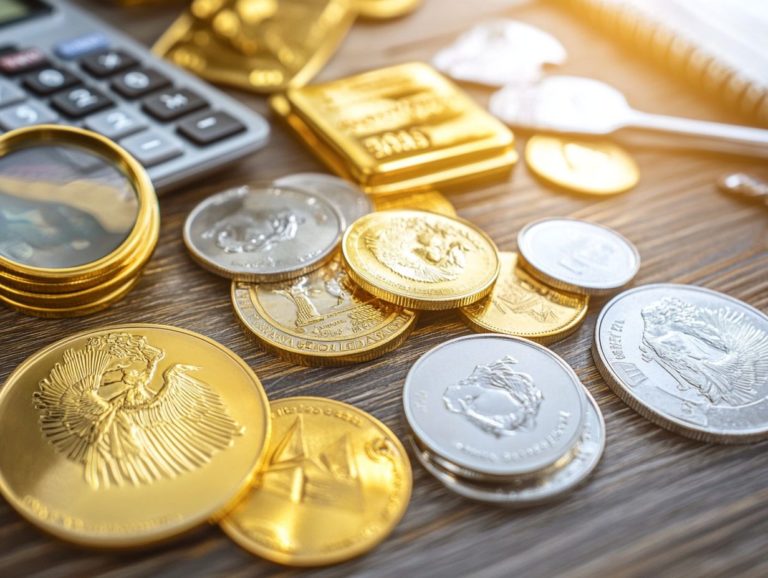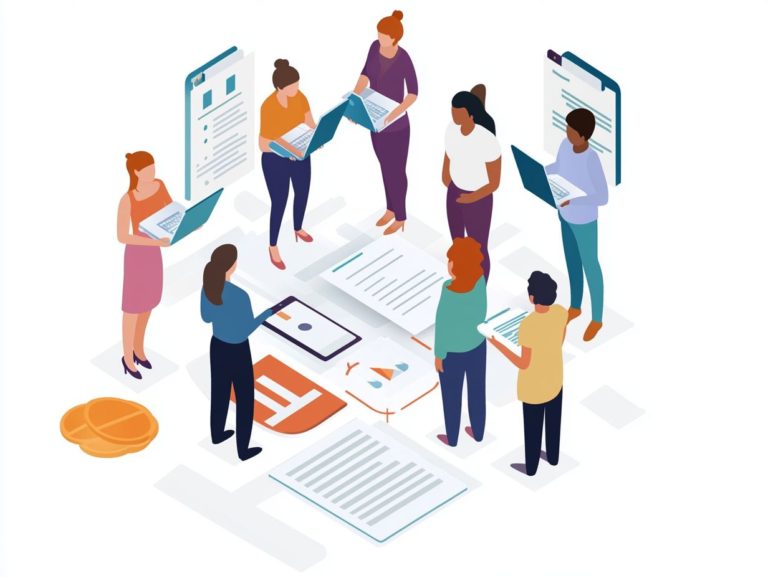What Are the Environmental Impact of Precious Metal Mining?
Precious metal mining is integral to the economy, supplying vital materials for technology, jewelry, and various industries. However, this process carries substantial environmental costs. This exploration delves into the complexities of mining, revealing its impacts such as water pollution, air quality degradation, and land destruction.
You ll discover the regulations designed to mitigate these effects, as well as alternatives like recycling and sustainable practices. Join us on this journey to uncover the truth behind precious metal mining!
Contents
- Key Takeaways:
- Overview of Precious Metal Mining
- Environmental Impacts of Precious Metal Mining
- Regulations and Mitigation Measures
- Alternativas a la miner a tradicional de metales preciosos
- Frequently Asked Questions
- What Are the Environmental Impacts of Precious Metal Mining?
- How does precious metal mining contribute to soil and water pollution?
- What are the effects of deforestation caused by precious metal mining?
- How does precious metal mining impact greenhouse gas emissions?
- What are the social impacts of precious metal mining?
- Can precious metal mining be done in an environmentally sustainable way?
Key Takeaways:

Precious metal mining has significant environmental impacts, including water and air pollution, land degradation, and deforestation. Governments and the mining industry have implemented regulations and mitigation measures to reduce these impacts, but more efforts are needed. Alternatives such as recycling and exploring sustainable mining practices can help minimize the environmental impacts of precious metal mining.
Overview of Precious Metal Mining
Precious metal mining is a pivotal industry across diverse geographical landscapes, particularly in the Arctic and boreal regions, including Norway, Sweden, Finland, Russia, Alaska, Canada, and Greenland. Here, mining operations have profoundly influenced the socio-ecological systems of local communities.
The extraction of metals like gold and copper involves complex processes that require stakeholder engagement, advanced mapping tools, and keen environmental awareness. This underscores the importance of effective evidence synthesis and integrating indigenous knowledge to alleviate the impacts of mining activities.
Explanation of Mining Process
The mining process consists of several stages exploration, extraction, and processing all vital for acquiring valuable metals while ensuring minimal disruption to the environment. Each phase is crucial for maintaining both efficiency and sustainability.
In the exploration stage, advanced mapping tools and remote sensing are instrumental in pinpointing potential sites, significantly reducing the time and resources needed for site assessment.
Once a viable location is confirmed, extraction methods embrace automation and precision engineering, enhancing productivity and substantially lessening land use impacts associated with traditional mining practices.
The processing stage benefits from innovative solutions like water recycling and waste treatment systems, which effectively minimize harmful emissions and manage by-products. Remediation techniques are seamlessly integrated throughout each stage, ensuring that land is restored after mining activities, helping to preserve biodiversity and promote ecological balance.
Environmental Impacts of Precious Metal Mining
Precious metal mining has profound environmental impacts, influencing both ecological and social dimensions. As mining activities unfold, they contribute to climate change, land degradation, and negative repercussions for communities in the regions where these operations take place.
Water Pollution and Contamination
Water pollution and contamination are significant environmental ramifications of metal mining, often resulting from runoff, chemical spills, and inadequate waste management practices. These activities introduce heavy metals and toxins into nearby water systems, severely impacting aquatic life and jeopardizing the health of surrounding ecosystems.
Affected communities face harrowing choices as access to clean drinking water dwindles, leading to health complications and economic strain. This pollution disrupts local biodiversity and threatens traditional livelihoods, such as fishing and agriculture, which rely on pristine water sources.
To counter these detrimental effects, various remediation techniques, such as bioremediation and constructed wetlands, can play a pivotal role in restoring affected waterways and promoting ecological balance. It s crucial that we take action now to protect our environment.
Air Pollution and Greenhouse Gas Emissions
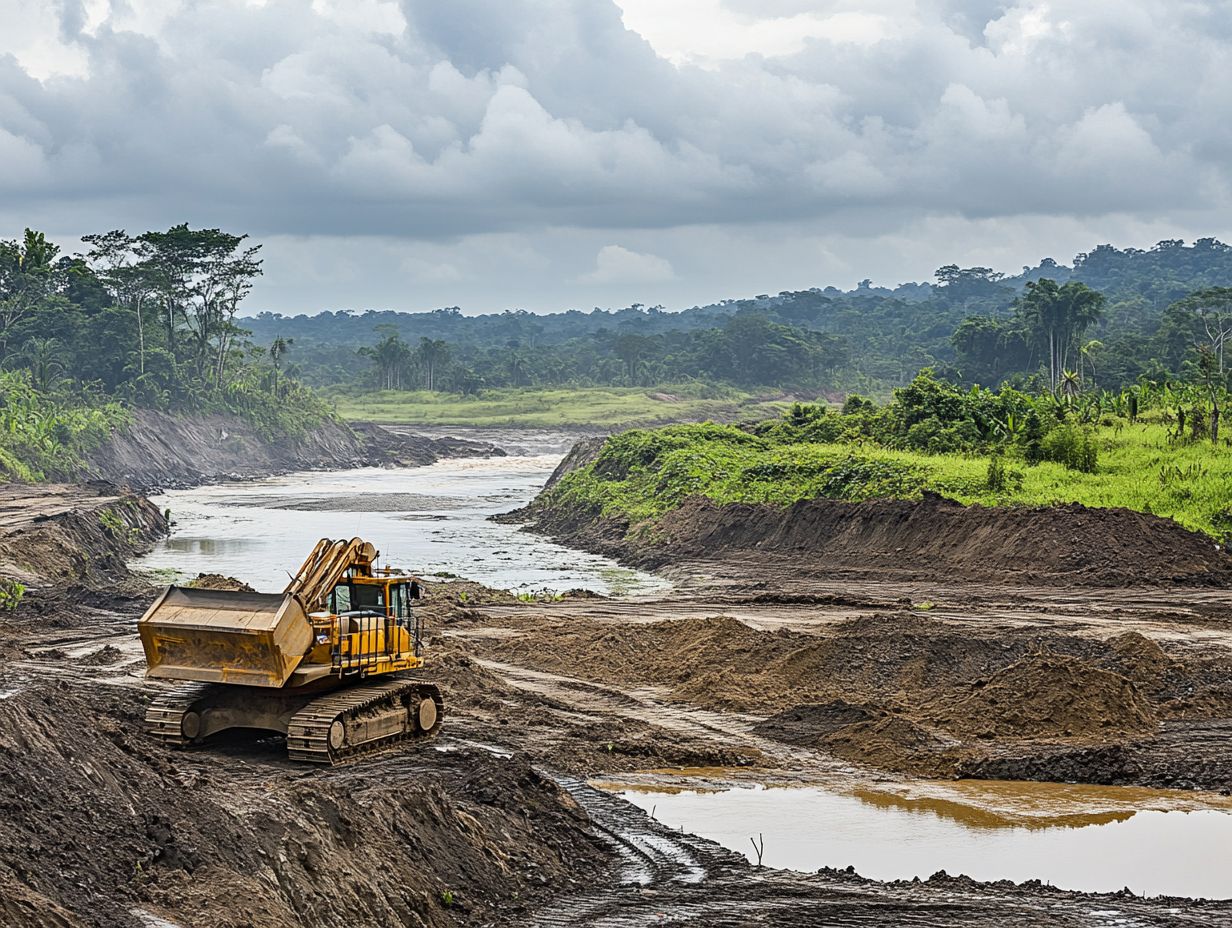
Air pollution and greenhouse gas emissions are major challenges caused by precious metal mining, which significantly contribute to climate change while posing health risks to nearby communities.
The extraction processes in mining like drilling, blasting, and hauling release substantial amounts of harmful gases and particulate matter into the atmosphere. Heavy mining equipment, such as trucks and excavators, often adds to the problem by emitting carbon dioxide and other greenhouse gases, further intensifying climate change impacts.
Dust from ore processing not only deteriorates air quality but can also contaminate water sources, creating severe health risks for local populations. These emissions can lead to respiratory issues, cardiovascular diseases, and other health complications in nearby communities.
This reality underscores the pressing need for better regulations and sustainable practices within the mining industry.
Land Degradation and Deforestation
Land degradation and deforestation pose serious environmental challenges due to precious metal mining, leading to the loss of biodiversity and significant alterations to natural habitats. These destructive processes disrupt ecosystem stability, affecting wildlife and local communities that rely on these ecosystems for their livelihoods.
As mining operations clear extensive areas of forest, the soil becomes increasingly vulnerable to erosion and nutrient depletion, ultimately diminishing agricultural productivity in the surrounding regions. Adverse effects can be further exacerbated by social issues, such as the displacement of indigenous populations and the disruption of traditional practices.
To tackle these challenges, embracing mitigation measures is crucial. Reforestation and sustainable land-use practices can restore ecological balance and support the communities impacted by mining activities.
Regulations and Mitigation Measures
Regulations and mitigation measures hold significant importance in the precious metal mining industry, striving to harmonize economic benefits with environmental stewardship and social responsibility.
By adhering to these frameworks, you can ensure that your endeavors contribute positively to both the economy and the community while minimizing ecological impact.
Government Regulations and Industry Standards
Government regulations and industry standards serve as crucial frameworks guiding your precious metal mining operations, aiming to minimize environmental impacts and promote sustainability.
These regulations, which differ by region, require you to follow safety protocols, manage waste responsibly, and control emissions to protect local ecosystems.
For example, the U.S. Environmental Protection Agency (EPA) enforces rigorous guidelines under the Clean Water Act and the Resource Conservation and Recovery Act, focusing on preventing water contamination and encouraging responsible waste disposal.
On a broader scale, international standards such as the International Council on Mining and Metals (ICMM) guidelines emphasize transparency and community engagement, fostering a sense of corporate responsibility that cannot be overlooked.
By aligning your practices with these regulatory frameworks, you not only protect biodiversity and improve air quality but also enhance your social license to operate, ultimately supporting sustainable development goals.
Efforts to Reduce Environmental Impact
Efforts to minimize environmental impact in the precious metal mining industry involve a range of mitigation measures, including the adoption of innovative technological solutions and effective remediation techniques.
For instance, the industry is increasingly utilizing advanced automation and data analytics to optimize resource extraction while significantly reducing waste. Companies are implementing closed-loop water systems, drastically cutting down on water usage and ensuring local ecosystems remain unharmed.
These groundbreaking innovations, along with successful remediation techniques like reforestation and soil restoration, have yielded encouraging results in revitalizing mined lands.
These collective actions highlight a robust commitment to sustainable mining practices, proving that we can balance resource needs with environmental care!
Alternativas a la miner a tradicional de metales preciosos
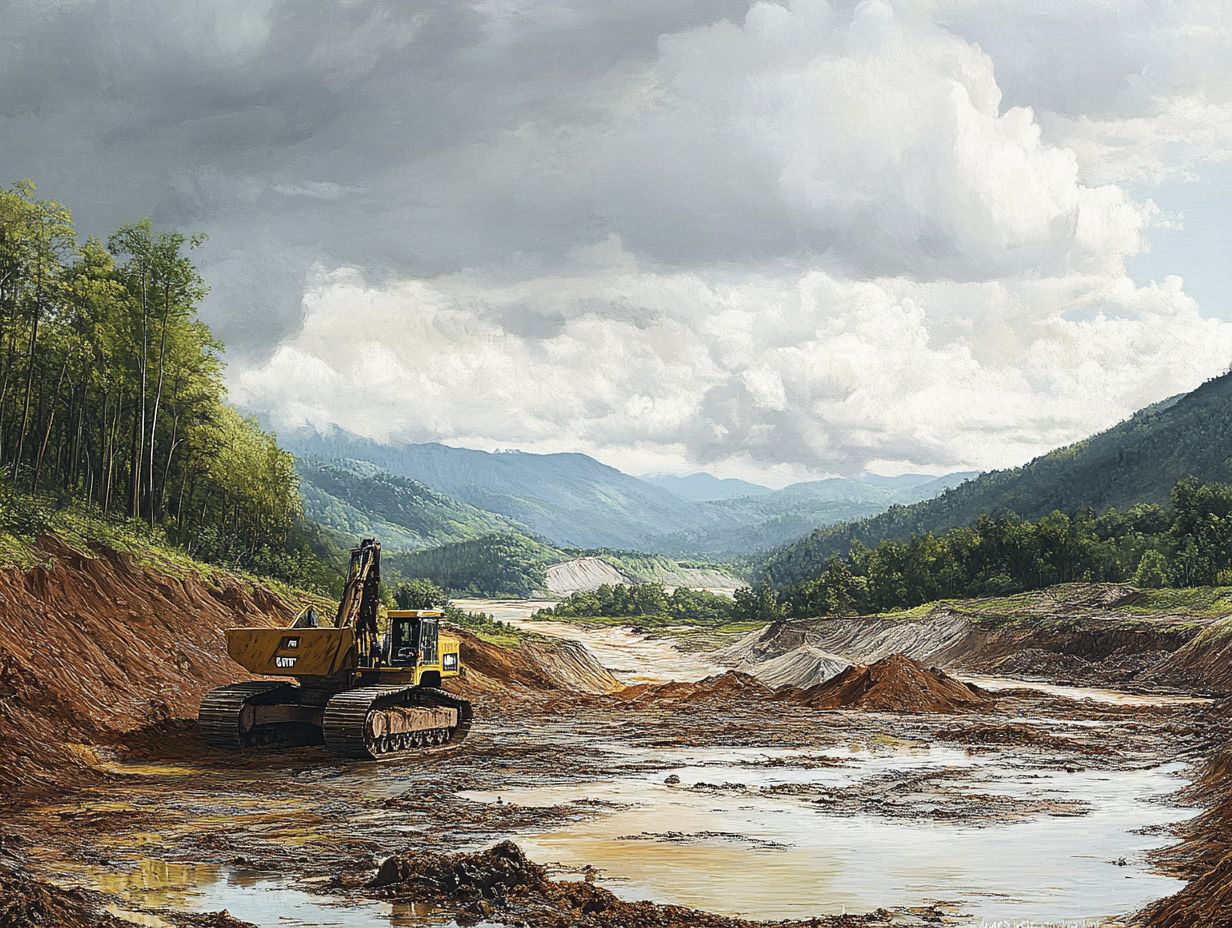
Exploring alternatives to traditional precious metal mining is crucial for minimizing environmental impacts and promoting sustainable practices.
This approach benefits local communities and supports ecosystem health.
By prioritizing these innovative methods, you contribute to a more responsible and balanced relationship with our planet.
Recycling and Reusing Precious Metals
Recycling and reusing precious metals is a viable alternative to traditional mining methods. It significantly reduces environmental impacts and resource depletion.
This approach conserves natural resources, minimizes energy consumption, and cuts greenhouse gas emissions tied to mining.
By processing old electronics, jewelry, and industrial scraps, you contribute to environmental sustainability and bolster local economies.
Reclaiming valuable materials supports eco-friendly practices, reduces carbon footprints, and promotes a circular economy.
Educating others about recycling s benefits inspires greater societal commitment to environmental stewardship, ensuring a healthier planet for future generations.
Exploring Sustainable Mining Practices
Exploring sustainable mining practices offers innovative strategies to minimize environmental impacts while championing social responsibility.
Integrating advanced technologies like remote sensing and data analytics can significantly reduce waste and energy consumption in mining operations.
Engaging local communities in decision-making cultivates ownership and ensures developmental initiatives align with their needs.
This collaborative approach enhances operational efficiency and supports biodiversity and conservation efforts.
As the industry evolves, embracing these strategies helps meet regulatory demands while positively contributing to ecological landscapes and local livelihoods.
Frequently Asked Questions
What Are the Environmental Impacts of Precious Metal Mining?
Precious metal mining has several environmental impacts, including soil and water pollution, deforestation, and greenhouse gas emissions. It can lead to the displacement of local communities and harm wildlife habitats. Explore more on how we can mitigate these effects.
How does precious metal mining contribute to soil and water pollution?
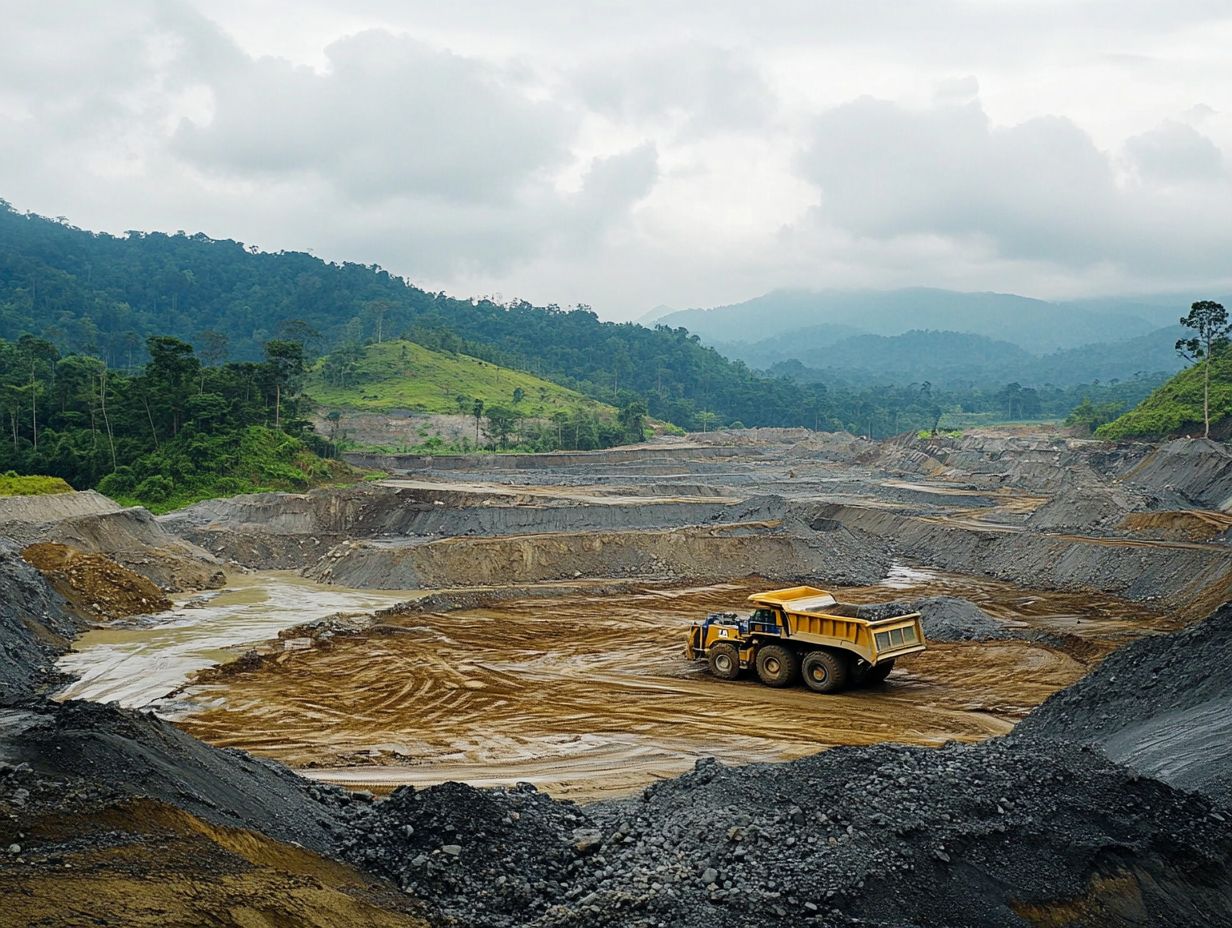
During mining, large amounts of chemicals are used to extract metals from ore. These chemicals can contaminate soil and water, making survival difficult for plants and animals.
What are the effects of deforestation caused by precious metal mining?
Deforestation occurs when mining companies clear large areas of land to access precious metal deposits. This disrupts local ecosystems and leads to soil erosion and loss of biodiversity.
How does precious metal mining impact greenhouse gas emissions?
Precious metal mining is energy-intensive. The use of heavy machinery and transportation vehicles contributes significantly to greenhouse gas emissions.
Precious metal mining can negatively affect local communities, causing displacement, loss of livelihoods, and health problems due to pollution. It may also lead to conflicts between mining companies and indigenous communities.
Can precious metal mining be done in an environmentally sustainable way?
While it is challenging to eliminate all environmental impacts, mining companies can take measures to minimize them. This includes adopting sustainable practices, implementing reforestation programs, and properly disposing of mining waste.
Join the movement towards sustainable practices today!

